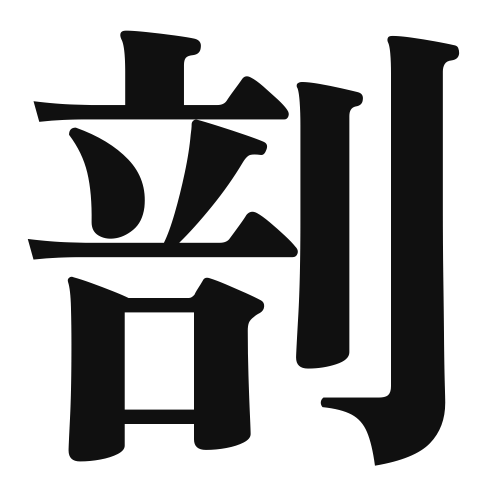1. Overview of Meaning
The kanji “剖” (pronounced “bō”) means “to dissect” or “to cut open.” It is often used in contexts related to analysis or examination, particularly in medical or scientific fields.
2. Formation and Radical
Formation of the Kanji: The kanji “剖” is a compound character (会意文字) that combines elements to convey its meaning. It consists of the radical for “knife” (刂) and the character “包” (which means “to wrap” or “to cover”). This combination suggests the action of cutting open something that is wrapped or covered.
Radical: The radical of “剖” is “刀” (meaning “knife”), which indicates that the character is related to cutting or slicing.
3. Examples of Usage
Common Words and Phrases:
- 剖析 (bōsaku) – analysis, dissection
- 剖検 (bōken) – autopsy
Example Sentences in Daily Conversation:
- このデータを剖析して、問題を見つけましょう。 (Let’s dissect this data to find the problem.)
- 医者は剖検を行って、死因を調べました。 (The doctor performed an autopsy to investigate the cause of death.)
4. Synonyms and Antonyms
Similar Kanji:
- 解剖 (kaibō) – dissection, often used in a biological context. While both “剖” and “解” relate to cutting, “解” emphasizes the idea of unraveling or solving.
Antonyms:
- 包む (tsutsumu) – to wrap, which is the opposite action of cutting open.
5. Cultural and Historical Background
Relation to Japanese Culture: The concept of dissection has historical significance in Japan, particularly in the study of medicine and anatomy. The practice of “剖検” has been essential in advancing medical knowledge.
Proverbs and Idioms: While there are no specific proverbs that directly use “剖,” the idea of analyzing or dissecting a problem is often reflected in Japanese sayings that emphasize thorough examination and understanding.
